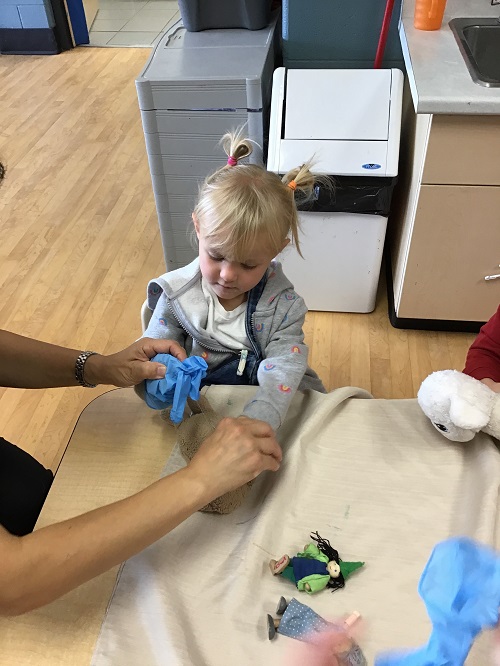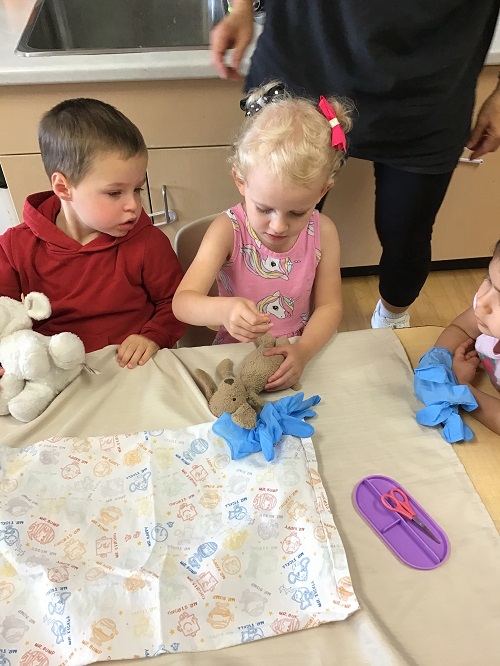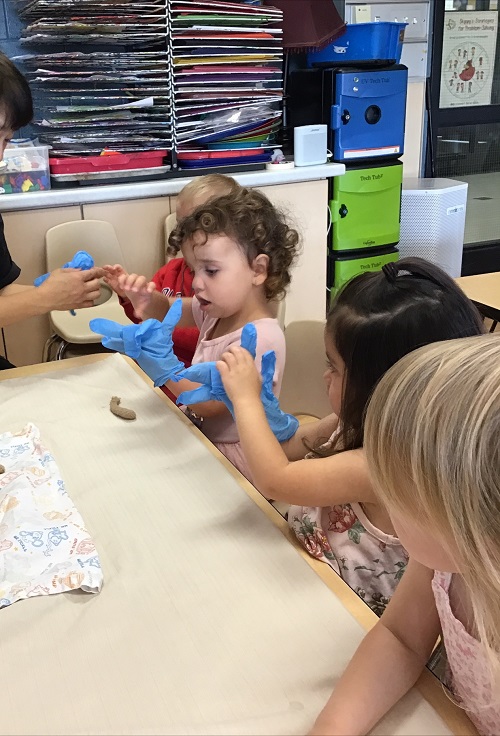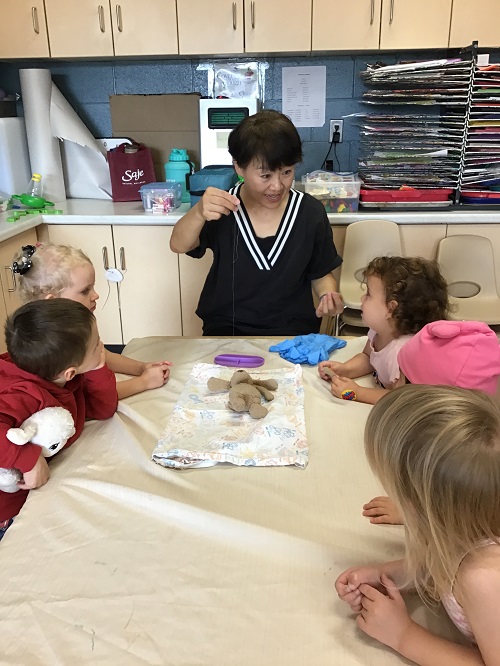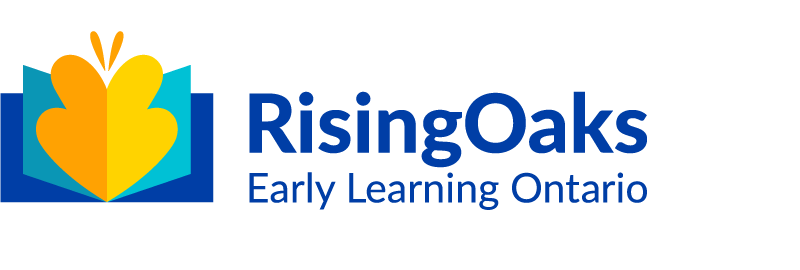The Preschool 2 children at RisingOaks Early Learning | John Sweeney, love dramatic play. Through dramatic play, they learn to express themselves and practice and imitate adult and cultural roles. Also, it develops their skills of problem-solving, coordinating, cooperating, and flexible thinking.
In early September, we had a special day in our classroom, as the children took on the role of surgeons to fix a broken stuffed toy. It all started when Carina’s favorite stuffed animal, Waggs, had an accident. His arm got torn, and Carina was very sad when it happened in the morning. Seeing Carina’s sadness, we decided to turn the situation into a fun problem-solving activity. We came up with the idea to be surgeons and perform “surgery” on Waggs. Everyone was excited and ready to help, so we began preparing for the operation.
First, the children worked together to make Waggs comfortable. They created a cozy bed by arranging a pillow and a blanket for him to lay on, ensuring he had a soft and safe place for the surgery. The children were very caring as they placed Waggs in his little bed, showing their empathy and concern for him. Next, we put on our surgeon gloves, just like real doctors. Everyone was eager to join in, but they also became serious, realizing that they were about to fix Waggs’s arm. Educator Hope played the role of the head surgeon and told the children that Waggs would get a special shot so he wouldn’t feel any pain during the surgery. At this point, Ariston’s face lit up with surprise—he looked a bit scared and worried about the idea of Waggs getting a shot. This showed how deeply the children were involved in the dramatic play experience. Then, we explored the tools we would need for the surgery. Hope showed the children a needle and thread, explaining how we could use them to sew Waggs’s arm back together. One by one, the children took turns holding the needle carefully, and we all paid close attention to how it worked. They were very curious and excited as they explored these new materials.
When it was time to start the surgery, the children became very focused. Everyone carefully followed Hope’s instructions, taking turns to gently guide the needle through Waggs’s arm. As each child had a turn, the others watched closely, learning from their peers. The area was filled with concentration as we worked together to make sure Waggs’s arm was fixed properly. After the surgery was complete, the mood quickly changed. All the serious faces turned into big smiles as the children realized they had fixed Waggs’s arm! Carina said with a big smile, “Wagsy is okay now. Thank you!” Then, there was a sense of pride and joy around the operating table, as everyone felt proud of their teamwork and accomplishment.
This experience was a perfect example of inquiry-based play, where the children took on real-world roles and solved a meaningful problem. This collaborative effort showed their problem-solving abilities and how deeply they could focus on a task when they found a meaning in it. Throughout the process, they asked questions, learned about stitches, and reflected on how real doctors might handle such situations. Through this play, the children developed their fine motor skills, worked together as a team, and showed empathy for Carina and Waggs. Most importantly, they enjoyed learning through play as they meaningfully solved a problem together!
